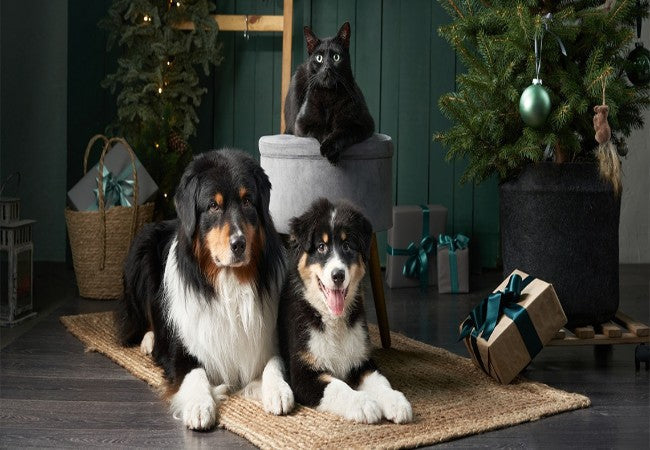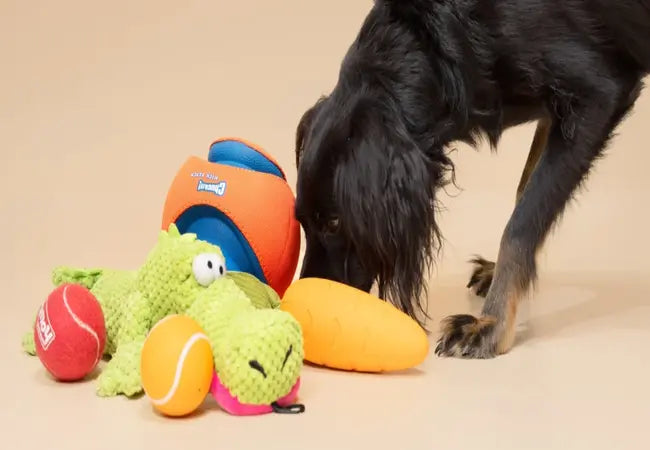Leash Reactivity in Dogs 2025: Vet Guide to Calm, Confident Walks 🐕

In this article
Leash Reactivity in Dogs 2025: Vet Guide to Calm, Confident Walks 🐕
By Dr. Duncan Houston BVSc
🔍 What Is Leash Reactivity?
Leash reactivity is when a dog lunges, barks, growls, or freezes while on leash—often toward other dogs, people, animals or objects—even though they behave calmly off-leash. It's driven not by aggression, but by fear, anxiety, frustration, or excitement.
⚠️ Why It Happens
- Fear or anxiety: Leash limits escape and amplifies stress response.
- Frustration: They see something they want (another dog, squirrel) but can’t reach it.
- Poor socialization: Lack of early exposure makes new stimuli overwhelming.
- Negative past experiences: A past incident on leash can become a trigger.
🎯 Step 1: Manage Distance & Environment
- Identify your dog’s “trigger threshold”—the distance at which reactivity begins.
- Walk where triggers are minimal. If spotting a trigger, calmly change direction before reactivity starts.
- Use tools like front-clip harnesses or head halters for better control without pressure.
✨ Step 2: Focus & Alternative Behaviours
- Teach cues like “look at me” or “heel”—reward for attention, not trigger focus.
- Practice in low-distraction areas, gradually approaching but avoiding crossing the threshold.
🔄 Step 3: Counterconditioning & Desensitization
- Pair the trigger with treats or toys at a safe distance ("counterconditioning").
- Gradually decrease distance while maintaining calm responses—don’t rush the process.
- Always be proactive—not reactive—by redirecting before behavior escalates.
🛠️ Step 4: Use Appropriate Equipment
- Opt for a front-clip harness or head halter to redirect attention gently.
- Avoid choke chains or retractable leads—they can worsen anxiety and reduce control.
- Always walk calmly—tension transfers from handler to dog through leash tension.
👍 Step 5: Build Confidence & Calmness
- Reward every non-reactive response. Even a glance at a trigger deserves praise.
- Provide mental enrichment before walks (puzzle toys, scent games) to reduce built-up arousal.
🏅 Step 6: Practice Controlled Exposures
- Use friends with trained, calm dogs to practice exposures slowly in quiet environments.
- Stay far enough that triggers are visible but not overwhelming.
- Gradually decrease the distance with consistent reinforcement.
🔎 Step 7: Recognize Zones of Reactivity
- Yellow (Alert): Dog notices triggers; looking away earns reward.
- Orange (Tense): Leash tension begins; early redirection is key.
- Red (Over threshold): Barking or lunging; STOP, withdraw calmly, and reset.
👩⚕️ Step 8: Know When to Get Help
- If reactivity includes snapping, biting, or extreme fear, consult a veterinary behaviorist or certified trainer.
- Rule out medical causes—pain can masquerade as sudden reactivity.
🧠 Preventing Relapse
- Maintain regular "refresher" sessions and continue rewarding calm over a variety of routes and triggers.
- Always end on a positive note—even leaving the area earns praise and reward.
📋 Dr Houston’s Leash Reactivity Training Checklist
- ✔️ Determine safe distance & triggers
- ✔️ Use front-clip harness or head halter
- ✔️ Teach “look/leave it” focus commands with rewards
- ✔️ Pair triggers with positive rewards (counterconditioning)
- ✔️ Walk predictable routes, reducing distance gradually
- ✔️ Recognize reactivity zones and step back when needed
- ✔️ Seek professional help for severe or dangerous behaviors
- ✔️ Maintain training consistency and environmental variation
- 📱 Ask A Vet is here for walk‑by‑walk support
🌟 Final Thoughts
Leash reactivity isn’t aggression—it’s an anxiety-based response to feeling trapped or frustrated. With clear management, positive reward training, and structured desensitization, most dogs can learn to walk confidently on leash. Be patient—life-changing calmness often emerges one supportive step at a time. Need personalized support? Visit AskAVet.com or download the Ask A Vet app—your expert walk‑by‑walk partner. 📱🐾






